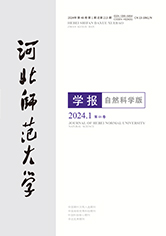期刊信息

- 刊名: 河北师范大学学报(自然科学版)Journal of Hebei Normal University (Natural Science)
- 主办: 河北师范大学
- ISSN: 1000-5854
- CN: 13-1061/N
- 中国科技核心期刊
- 中国期刊方阵入选期刊
- 中国高校优秀科技期刊
- 华北优秀期刊
- 河北省优秀科技期刊
时间延缓效应在不同种类时钟中的体现
- (1.西南交通大学 物理科学与技术学院,四川 成都 610031; 2.南洋理工大学 电气与电子工程学院,新加坡)
-
DOI:10.13763/j.cnki.jhebnu.nse.202102018
Time Dilation of Relativity in Different Clocks
摘要/Abstract
讨论了广义相对论描述的强引力场中的时间延缓效应是否可用任何类型的时钟验证的问题. 通过论证得出结论:引力场中的时钟的快慢取决于时钟自身的工作原理,并非时间变快或者变慢所致. 单摆钟在强引力场中所测时间变快,是由于强引力使单摆摆动的物理过程加快,非时间变快所致;同理,原子钟在强引力场中所测时间变慢,是由于强引力使原子能级发生变化,从而导致原子辐射的物理过程变慢,亦非时间变慢所致. 最后,探讨了时钟与时间的本质问题.
Discuss whether time dilation effect in strong gravitational field can be verified by any types of clocks. Arguing that the ticking rate of a clock in gravitational field depends on the working principle of the clock itself, not because time becomes faster or slower. By making a comparison between the dynamics of pendulum clocks and atomic clocks, we show that time measured by an atomic clock becomes slower is because stronger gravity slows down the physical process of atomic radiation, not because time becomes slower. Finally, the article discusses the nature of clock and time.
关键词
参考文献 24
- [1] EINSTEIN B A. On The Electrodynamics of Moving Bodies [J] . Annals of Physics, 1905, 17:891-921.
- [2] IVES H E, STILWELL G R. An Experimental Study of the Rate of a Moving Atomic Clock [J] . Journal of the Optical Society of America, 1938, 28(7):215-219. doi:10. 1364/JOSA. 28. 000215
- [3] IVES H E, STILWELL G R. An Experimental Study of the Rate of a Moving Atomic Clock Ⅱ [J] . Journal of the Optical Society of America, 1941, 31(5):369-374. doi:10. 1364/JOSA. 31. 000369
- [4] BOTERMANN B, BING D, CHRISTOPHER G, et al. Test of Time Dilation Using Stored Li+ Ions as Clocks at Relativistic Speed [J] . Physical Review Letters, 2014, 113:120405. doi:10. 1103/PhysRevLett. 113. 120405
- [5] FRISCH D H, SMITH J H. Measurement of the Relativistic Time Dilation Using μ-mesons [J] . American Journal of Physics, 1963, 31(5):342-355. doi:10. 1119/1. 1969508
- [6] JASEJA T S, JAVAN A, MURRAY J, et al. Test of Special Relativity or of the Isotropy of Space by Use of Infrared Masers [J] . Physical Review, 1964, 133(5A):A1221-A1225. doi:10. 1103/PhysRev. 133
- [7] BAILEY J, BORER K, COMBLEY F, et al. Measurements of Relativistic Time Dilatation for Positive and Negative Muons in a Circular Orbit [J] . Nature, 1977, 268:301-305. doi:10. 1038/268301a0
- [8] COOPER P S, ALGUARD M J, EHRLICH R D, et al. Experimental Test of Special Relativity from a High-r Electron g-2 Measurement [J] . Physical Review Letters, 1979, 42(21):1386-1389. doi:10. 1103/PhysRevLett. 42. 1386
- [9] MCGOWAN R W, GILTNER D M, STERNBERG S J, et al. New Measurement of the Relativistic Doppler Shift in Neon [J] . Physical Review Letters, 1993, 70(3):251-254. doi:10. 1103/PhysRevLett. 70. 251
- [10] COLEMAN S, GLASHOW S L. Cosmic Ray and Neutrino Tests of Special Relativity [J] . Physical Letters B, 1997, 405:249-252. doi:10. 1016/S0920-5632(99)00435-1
- [11] COLEMAN S, GLASHOW S L. High-energy Tests of Lorentz Invariance [J] . Physical Review D, 1999, 59:116008. doi:10. 1103/PhysRevD. 59. 116008
- [12] KOSTELECKýV A, LANE C D. Constraints on Lorentz Violation from Clock-comparison Experiments [J] . Physical Review D, 1999, 60:116010. doi:10. 1103/PhysRevD. 60. 116010
- [13] BOGGS S E, WUNDERER C B, HURLEY K, et al. Testing Lorentz Invariance with GRB021206 [J] . The Astrophysical Journal, 2004, 611:L77-L80. doi:10. 1086/423933
- [14] MUELLER H, STANWIX P L, TOBAR M E, et al. Relativity Tests by Complementary Rotating Michelson-morley Experiments [J] . Physical Review Letters, 2007, 99(5):050401. doi:10. 1103/PhysRevLett. 99. 050401
- [15] BERTOLAMI O, ARAMOS J P. Using Global Positioning Systems to Test Extensions of General Relativity [J] . International Journal of Modern Physics D, 2011, 20(9):1617-1641. doi:10. 1142/s0218271811019451
- [16] CHOU C W, HUME D B, ROSENBAND T, et al. Optical Clocks and Relativity [J] . Science, 2010, 329(5999):1630-1633. doi:10. 1126/science. 1192720
- [17] BRIATORE L, LESCHIUTTA S. Evidence for the Earth Gravitational Shift by Direct Atomic-time-scale Comparison [J] . Nuovo Cimento, Sezione B, 1977, 37B:219-231. doi:10. 1007/BF02726320
- [18] REINHARDT S, SAATHOFF G, BUHR H, et al. Test of Relativistic Time Dilation with Fast Optical Atomic Clocks at Different Velocities [J] . Nature Physics, 2007, 3(12):861-864. doi:10. 1038/nphys778
- [19] LI B, ZHANG H, SHUM P P, et al. The Underlying Mechanisms of Time Dilation and Doppler Effect in Curved Space-time [J] . arXiv, 2018, 1802:10406.
- [20] BOURG E L. A Review of the Effects of Microgravity and of Hypergravity on Aging and Longevity [J] . Experimental Gerontology, 1999, 34(3):319-336. doi:10. 1016/s0531-5565(99)00004-2
- [21] VERNIKOS J, SCHNEIDER V S. Space, Gravity and the Physiology of Aging:Parallel or Convergent Disciplines? [J] . A Mini-review Gerontology, 2010, 56(2):157-166. doi:10. 1159/000252852
- [22] GOSWAMI N, van LOON J J W A, ROESSLER A, et al. Gravitational Physiology, Aging and Medicine [J] . Frontiers in Physiology Integrative Physiology, 2019, 10:01338. doi:10. 3389/fphys. 2019. 01338
- [23] DINARELLI S, LONGO G, DIETLER G, et al. Erythrocyte′s Aging in Microgravity Highlights How Environmental Stimuli Shape Metabolism and Morphology [J] . Scientific Reports, 2018, 8:5277. doi:10. 1038/s41598-018-22870-0
- [24] THAHELD F H. A New Biophysical Analysis of the Twin Paradox:The Interaction Between Velocity and the Variable Biological Clock [J] . Insights of Biomedical Research, 2019, 3:56-61. doi:10. 36959/584/447
